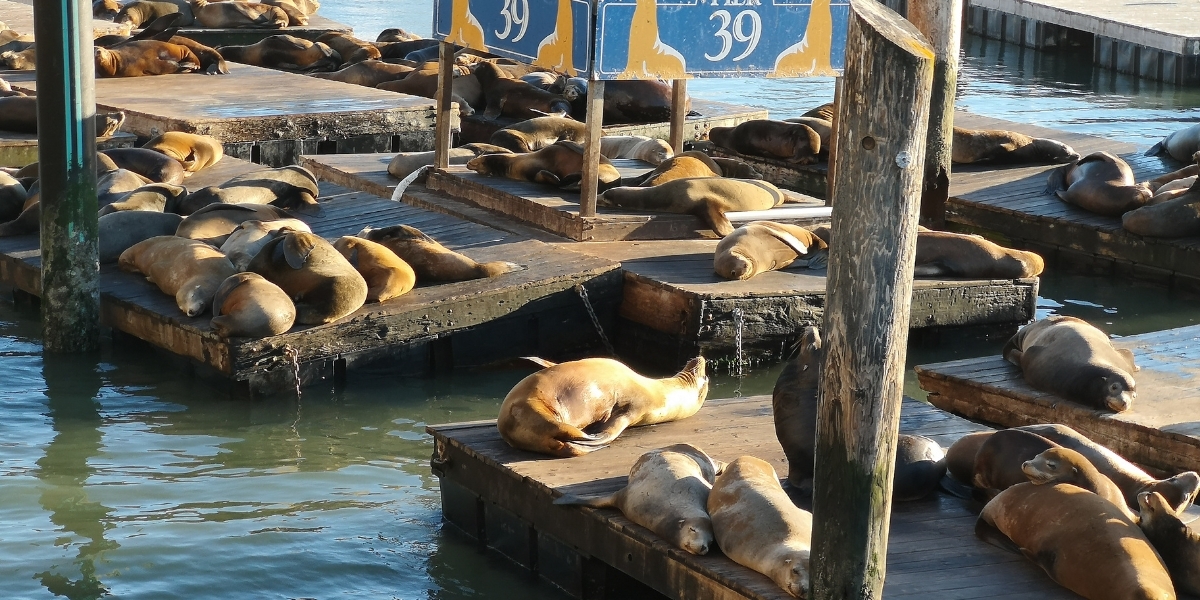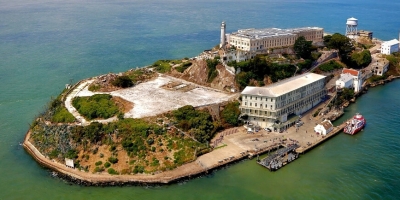Main Menu
-
Itineraries & Vacations
- Itineraries & Vacations
- BY TYPE
- Escorted Group Tours
- Road Trips in The US™
- BY INTEREST
- Route 66
- National Parks
- BY SPECIAL OFFER
- GIFT CARD
- Discount Coupons
- Tours in Major Cities
-
Travel Guides
- Travel Guides MOST VISITED CITY
- New York City Guide
- TOUR GUIDES BY CITY
- Miami - Travel Guide
- Los Angeles - Travel Guide
- San Francisco - Travel Guide
- Las Vegas - Travel Guide
- Chicago - Travel Guide
- Washington DC - Travel Guide
- Boston - Travel Guide
- San Diego - Travel Guide
- Orlando - Travel Guide
- New Orleans - Travel Guide
- TRAVELING IN THE US
- Good to Know
- Lodgings
- Disney Travels™
Fisherman’s Wharf San Francisco: Top Attractions & History
Historic Fisherman's Quarter of San Francisco Categories: San Francisco - Travel Guide - What to see
Fisherman’s Wharf: A Must-Visit Neighborhood in San Francisco
One of the most iconic and visited areas in the Californian city is Fisherman’s Wharf, located along San Francisco’s western coast. Known for its unique maritime atmosphere, it stands out among the many San Francisco attractions for its rich history, stunning bay views, and abundance of restaurants offering delicious local specialties.The History of Fisherman’s Wharf
The origins of picturesque Fisherman’s Wharf date back to the mid-19th century during the California Gold Rush, when many Italian immigrants (primarily from Genoa) settled in the North Beach area and began fishing in the rich waters of San Francisco Bay.The early fishermen used traditional feluccas with lateen sails and primarily caught Dungeness crab, a native species that remains a staple in many local dishes. Over time, the fishing community grew, and the area became the hub of the city’s fishing industry. Legend has it that the fishermen used songs to communicate through the foggy bay waters.
This tradition helped create a strong sense of community among the Italians, whose Genoese origins were also evident in the brightly colored boats they painted. It wasn’t until the 1970s and 1980s that Fisherman’s Wharf began developing as a tourist destination. Despite its popularity, it remains home to an active fishing fleet managed by descendants of the original founders—a perfect balance of tradition and modernity that is one of the area’s greatest strengths.
The Area’s Evolution
Before becoming what it is today, Fisherman’s Wharf underwent numerous transformations. During World War II, the neighborhood served as a strategic naval base and a hub for building and maintaining military ships.After the war, particularly in the 1950s, the first shops and restaurants began to appear along the waterfront, attracting both locals and visitors. But the real turning point came in the 1970s with the opening of the famous Pier 39, which remains one of the city’s most popular shopping and entertainment centers.
What to See at Fisherman’s Wharf
Several San Francisco attractions are located in the Fisherman’s Wharf area. Here are the highlights:- Pier 39: This iconic pier, nearly 50 years old, is full of shops and restaurants. It’s made even more special by the colony of sea lions that bask on the docks all day long.
- San Francisco Maritime National Historical Park: A historic park where you can admire perfectly preserved historic ships that tell the story of the city’s maritime heritage.
- Ghirardelli Square: Originally built by Italian immigrants, this historic complex once housed a chocolate factory and is now home to shops and restaurants.
- Musée Mécanique: An unusual collection where visitors can see vintage arcade games and old coin-operated machines that still work—a true trip back in time.
- USS Pampanito and SS Jeremiah O’Brien: Located at Pier 45, these World War II-era vessels—a submarine and a Liberty ship—are open for public tours and are very popular among locals and visitors alike.
Where and What to Eat at Fisherman’s Wharf
One of the main draws of this San Francisco neighborhood is its rich culinary scene, especially for fresh seafood dishes. One of the most beloved specialties is the Dungeness crab, served steamed or in various preparations.
Another favorite is the classic Clam Chowder, a creamy clam soup served in a bowl of fresh sourdough bread.
For those seeking a flavorful break, two historic Italian-American restaurants stand out: Alioto’s and Pompei’s Grotto, both family-run. Visitors on a budget can try the numerous food stalls along the pier, which also serve seafood dishes at more affordable prices.
The Sea Lions of Pier 39
One of the most beloved attractions at Fisherman’s Wharf is the colony of sea lions that has made its home at Pier 39. Fat and peaceful, they spend their days interacting and basking in the sun—a captivating sight for visitors of all ages.These large marine mammals settled here after the 1989 Loma Prieta earthquake, drawn by the safe environment and abundant food. Thanks to an educational center dedicated to their protection, the sea lions have become a true symbol of the neighborhood.
How to Get to Fisherman’s Wharf
The area is easily accessible by both public transport and rental car. Here are some useful directions:- By car: From Highway 101, follow the signs to downtown San Francisco and then directly to Fisherman’s Wharf. The neighborhood is well-marked, and several paid parking lots are available.
- By public transport: There are multiple options: the Cable Car (lines Powell–Hyde and Powell–Mason both end near Fisherman’s Wharf), the F-Line streetcar (connecting the area with downtown and the Castro district via Market Street and The Embarcadero), and several bus lines (particularly 30, 47, and 49).
If you have time and are nearby, the most recommended route is on the Cable Car, the historic manually operated streetcar that offers visitors a scenic ride through the city.
Map: Location and Admission
We are your
local Tour Agency
in New York City
local Tour Agency
in New York City
Tailored Vacations
Secure Bookings
Your peers love it!
Your vacation, your way!
Free cancellation
BECAUSE IT'S OKAY TO CHANGE PLANS
Planning a vacation shouldn't be stressful. We all know plans might change, that is why we offer free cancellation for most of our services and tours. *
*exclusions may apply, please refer to each tour.
Planning a vacation shouldn't be stressful. We all know plans might change, that is why we offer free cancellation for most of our services and tours. *
*exclusions may apply, please refer to each tour.
What They
Say
Say
Devonnec770 | TripAdvisor
I’m the biggest fan of Fall activities, but haven’t had a chance to do anything beyond Apple Picking in NJ. I decided to take a last minute 2 day trip with a friend in Hudson Valley, but didn’t know where to start [...] Thankfully I was able to use New York Welcome to do the hard work for us [...]
From TripAdvisor - October 2021
Breanna A. | TripAdvisor
Irene was a FANTASTIC tour guide! She was so knowledgeable about the area and was so patient with all our questions. We stopped to use the bathroom and we got coffee halfway through, she was so kind! It was a pleasure learning about Brooklyn from you!
From TripAdvisor - April 2022
Keep in contact
Subscribe to our "New York x USA Welcome" Newsletter to receive Tips & Special Offers to help you plan your travels in the US!
San Francisco Top-Tours
On The Road From/To San Francisco
San Francisco - What to Know
San Francisco Museums
Sightseeing & City Tours in Major Cities
- Brunch Cruise, Champagne & Live Music in San Francisco
- San Francisco Grand City Tour & Escape from the Rock Bay Cruise
- Escorted City Tour and Universal Studios entrance Ticket in LA
- 1 Day tour to Solvang, Hearst Castle and Santa Barbara from LA
- Chicago CityPASS
- Whale Watching Cruise in The Boston Bay
Escorted Group Tours - Traveling in The US with a Group
Private Transfer in Major Cities
Our Destinations in The USA
The US - Good to know
General Information
Office













